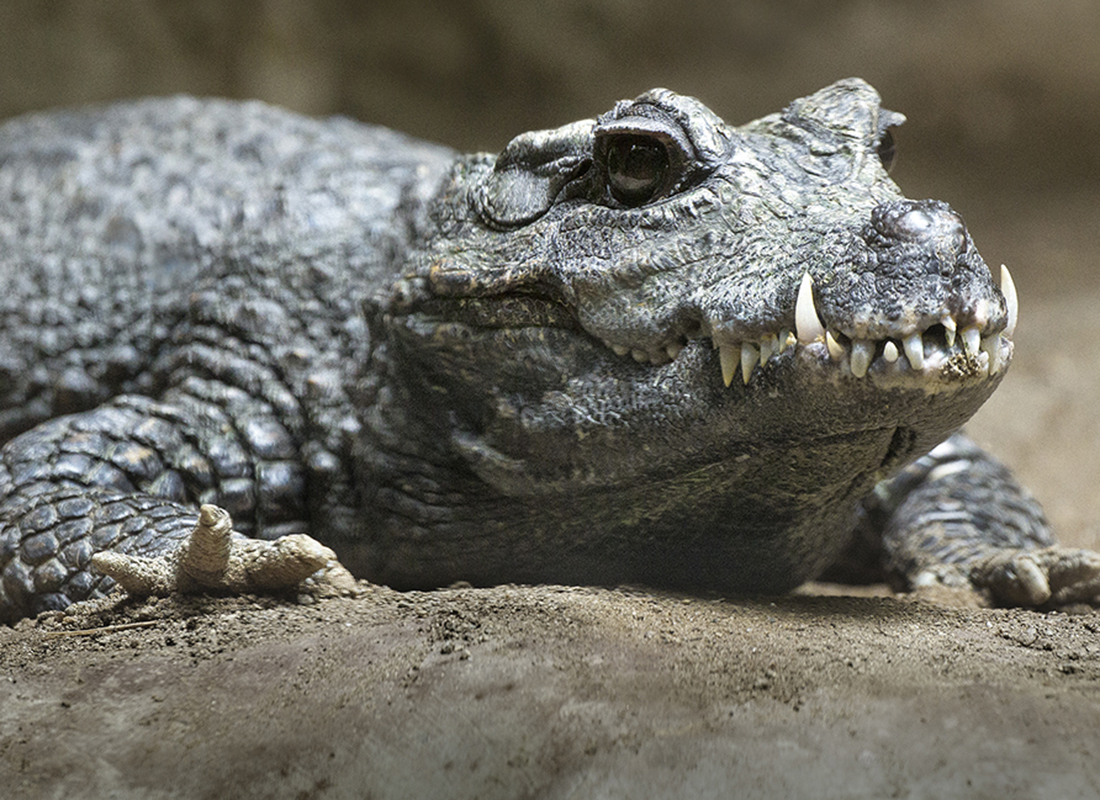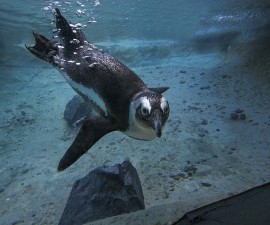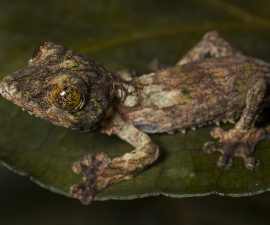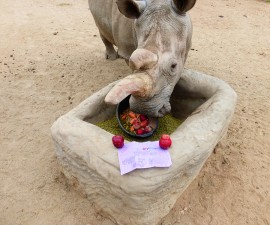BY Eston Ellis
Photography by Ken Bohn
 There are 12
There are 12
countries that contain sections of West African forest
From the top of the 65-foot-high Rady Falls—the largest human-made waterfall in San Diego—to the bottom of a pool with West African dwarf crocodiles—among the smallest crocodilian species in the world—the West African Forest habitat in Conrad Prebys Africa Rocks covers a lot of territory. This unique place is home to wildlife and plants from lush rain forests, dense lowland forests, coastal mangroves, rivers, swamps, and wetlands of West Africa.
In fact, more than 11,000 plant and animal species live in this region of western Africa. It gets an average of 80 inches of rain each year, supporting large populations of reptiles, amphibians, and water-loving mammals. The animals and plants that live here thrive in moist heat. And that’s a good thing, because temperatures hover between 80 and 90 degrees Fahrenheit most of the year, and there is extremely high humidity (up to 90 percent). The region is streaked with slow-moving rivers and dotted with vibrant wetlands.
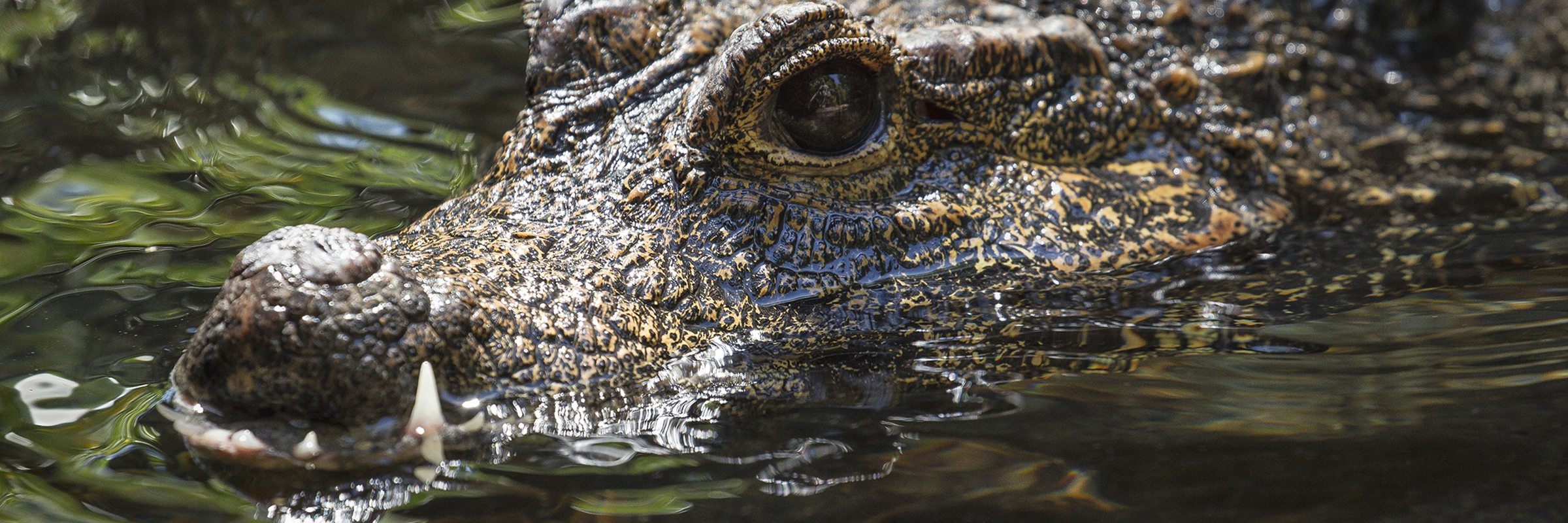
 The West African Forest receives 80 inches of rain per year
The West African Forest receives 80 inches of rain per year
Croc of the Rocks
An iconic denizen of the West African Forest habitat is the West African dwarf crocodile Osteolaemus tetraspis tetraspis. It may be one of the smallest crocodilian species, but it can still reach a length of about five feet. This timid crocodile’s mottled brown-to-black coloration helps it blend in with its surroundings, whether it is partially submerged in a log-filled swamp or stretching out on a low tree limb—using its surprising climbing ability.
While West African dwarf crocodiles spend their days in the water or basking in the sun, they look for food at night and feed on crabs, frogs, fish, snails, and other small animals. Females are devoted moms, covering their eggs in warm leaf litter, guarding them until they hatch, and then protecting the tiny hatchlings from numerous predators, including birds, fish, mongooses, and even other crocodiles. African dwarf crocodiles are listed as Vulnerable on the International Union for Conservation of Nature (IUCN) Red List of Threatened Species.
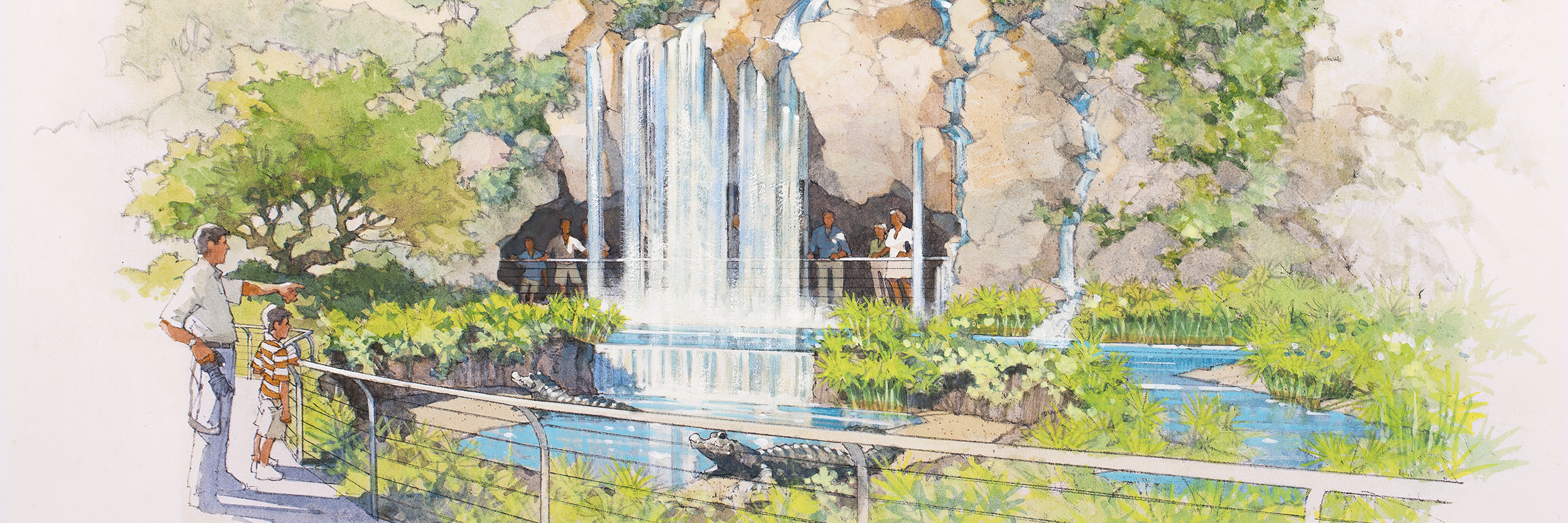
 There are 11,048 plant and animal species native to the area
There are 11,048 plant and animal species native to the area
Making a Splash
While there is much to see in the West African Forest, its dramatic focal point is Rady Falls, a splashy, showering cascade that is nearly seven stories high. The falls rush down a rocky outcropping, and will be seen—and heard—from several places in the Zoo. Water used in Rady Falls is recycled and recirculated, making it an environmentally friendly, water-wise feature. Guests can even walk behind the falls into a cavern-like grotto, to get a one-of-a-kind view through a wall of tumbling water.
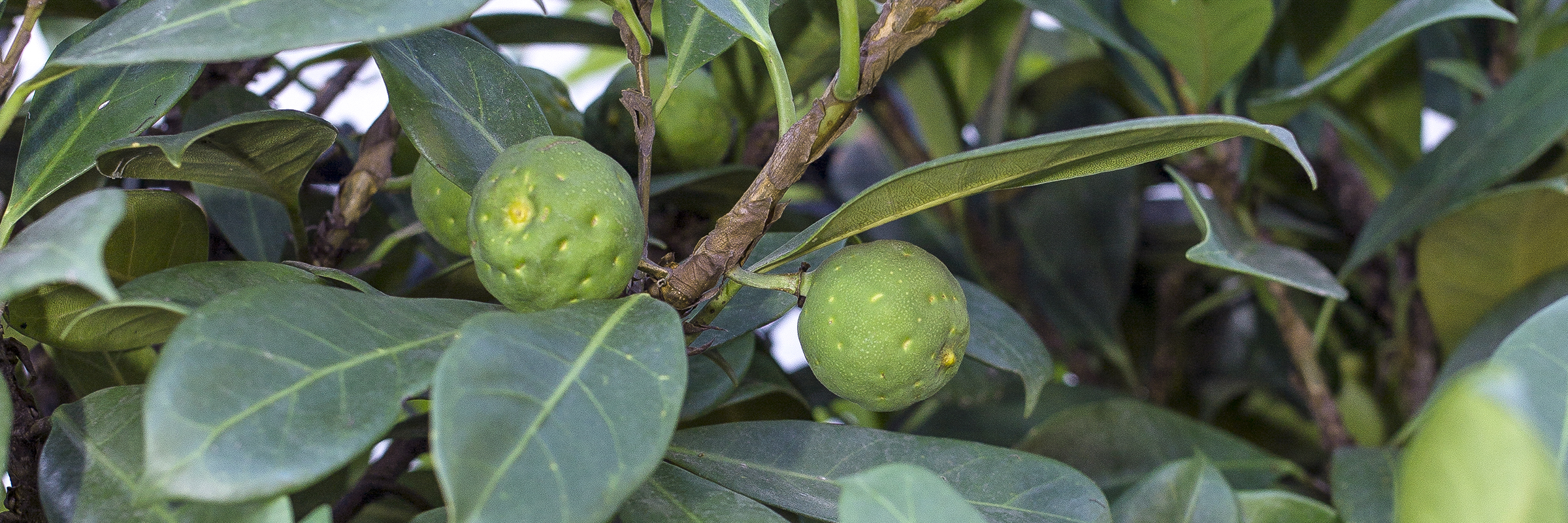
Rockin’ Fig
The floating fig tree Ficus cyathistipula can be found growing on rocky outcroppings, near swamps, and along riverbanks. The figs have spongy walls that allow them to float on the water’s surface. Pollinated by its own unique species of fig wasp, the tree bears fruit several times a year, providing food for many animal species.

